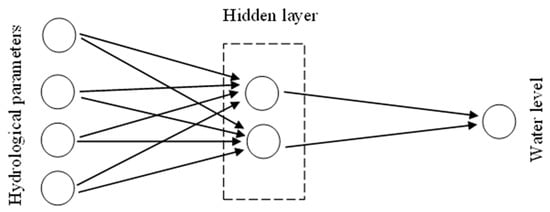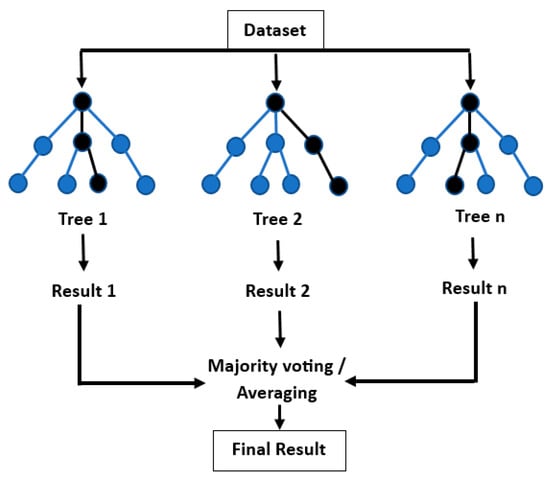Wetlands are simply areas that are fully or partially saturated with water. Wetlands have numerous hydrological, ecological, and social values. They play an important role in interactions among soil, water, plants, and animals. The rich biodiversity in the vicinity of wetlands makes them invaluable. Many anthropogenic activities damage wetlands. Climate change has adversely impacted wetlands and their biodiversity. The shrinking of wetland areas and reducing wetland water levels can therefore be frequently seen. However, the opposite can be seen during stormy seasons. Since wetlands have permissible water levels, the prediction of wetland water levels is important.
- artificial neural network (ANN)
- anthropogenic activities
- climate change
- machine-learning techniques
- urbanization
- wetlands
- water-level prediction
1. Introduction
2. Importance of Wetland Water-Level Monitoring
3. Available Machine-Learning Techniques to Predict Wetland Water Levels


This entry is adapted from the peer-reviewed paper 10.3390/environments10050075
References
- Gardner, R.C.; Davidson, N.C. The Ramsar Convention. In Wetlands; Springer: Dordrecht, The Netherlands, 2011; pp. 189–203.
- Janssen, R.; Goosen, H.; Verhoeven, M.L.; Verhoeven, J.T.A.; Omtzigt, A.Q.A.; Maltby, E. Decision support for integrated wetland management. Environ. Model. Softw. 2005, 20, 215–229.
- Savage, R.; Baker, V. The Importance of Headwater Wetlands and Water Quality in North Carolina; North Carolina Department of Environment and Natural Resources Diviion of Water Quality: Raleigh, NC, USA, 2007.
- Viaroli, P.; Bartoli, M.; Vymazal, J. Preface: Wetlands biodiversity and processes—Tools for conservation and management. Hydrobiologia 2016, 774, 1–5.
- Wu, H.; Zhang, J.; Ngo, H.H.; Guo, W.; Liang, S. Evaluating the sustainability of free water surface flow constructed wetlands: Methane and nitrous oxide emissions. J. Clean. Prod. 2017, 147, 152–156.
- Taillardat, P.; Thompson, B.S.; Garneau, M.; Trottier, K.; Friess, D.A. Climate change mitigation potential of wetlands and the cost-effectiveness of their restoration. Interface Focus 2020, 10, 20190129.
- Feher, L.C.; Osland, M.J.; Griffith, K.T.; Grace, J.B.; Howard, R.J.; Stagg, C.L.; Enwright, N.M.; Krauss, K.W.; Gabler, C.A.; Day, R.H.; et al. Linear and nonlinear effects of temperature and precipitation on ecosystem properties in tidal saline wetlands. Ecosphere 2017, 8, e01956.
- Stein, E.D.; Fetscher, A.E.; Clark, R.P.; Wiskind, A.; Grenier, J.L.; Sutula, M.; Collins, J.N.; Grosso, C. Validation of a wetland rapid assessment method: Use of EPA’s level 1-2-3 framework for method testing and refinement. Wetlands 2009, 29, 648–665.
- Noble, C.V.; Wakeley, J.S.; Roberts, T.H.; Henderson, C. Regional Guidebook for Applying the Hydrogeomorphic Approach to Assessing the Functions of Headwater Slope Wetlands on the Mississippi and Alabama Coastal Plains; Engineer Research and Development Center Vicksburg MS Environmental Lab: Vicksburg, MS, USA, 2007.
- Ringler, C.; Cai, X. Valuing fisheries and wetlands using integrated economic-hydrologic modeling—Mekong River Basin. J. Water Resour. Plan. Manag. 2006, 132, 480–487.
- Lefebvre, G.; Redmond, L.; Germain, C.; Palazzi, E.; Terzago, S.; Willm, L.; Poulin, B. Predicting the vulnerability of seasonally-flooded wetlands to climate change across the Mediterranean Basin. Sci. Total Environ. 2019, 692, 546–555.
- Kaleel, M.I.M. The Impact on Wetlands: A Study Based on Selected Areas in Ampara District of Sri Lanka. World News Nat. Sci. 2017, 7, 16–25.
- Chen, H.; Zhang, W.; Gao, H.; Nie, N. Climate Change and Anthropogenic Impacts on Wetland and Agriculture in the Songnen and Sanjiang Plain, Northeast China. Remote Sens. 2018, 10, 356.
- Chumaidiyah, E.; Dewantoro, M.D.R.; Kamil, A.A. Design of a Participatory Web-Based Geographic Information System for Determining Industrial Zones. Appl. Comput. Intell. Soft Comput. 2021, 2021, 6665959.
- USEPA. Methods for Evaluating Wetland Condition: Wetland Hydrology; EPA-822-R-08-024; Office of Water, U.S. Environmental Protection Agency: Washington, DC, USA, 2008.
- Choi, C.; Kim, J.; Kim, J.; Kim, H.S. Development of Combined Heavy Rain Damage Prediction Models with Machine Learning. Water 2019, 11, 2516.
- Jiang, X.; Wang, J.; Liu, X.; Dai, J. Landsat Observations of Two Decades of Wetland Changes in the Estuary of Poyang Lake during 2000–2019. Water 2021, 14, 8.
- Debanshi, S.; Pal, S. Wetland delineation simulation and prediction in deltaic landscape. Ecol. Indic. 2020, 108, 105757.
- Hossain, S.K.M.; Ema, S.A.; Sohn, H. Rule-Based Classification Based on Ant Colony Optimization: A Comprehensive Review. Appl. Comput. Intell. Soft Comput. 2022, 2022, 2232000.
- Li, J.; Chen, W. A rule-based method for mapping Canada’s wetlands using optical, radar and DEM data. Int. J. Remote Sens. 2005, 26, 5051–5069.
- Orme, A.R. Wetland Morphology, Hydrodynamics and Sedimentation. In Wetlands: A Threatened Landscape; Williams, M., Ed.; The Institute of British Geographers, The Alden Press Ltd.: Osney Mead, UK, 1990; pp. 42–94.
- Dai, X.; Wan, R.; Yang, G.; Wang, X.; Xu, L.; Li, Y.; Li, B. Impact of seasonal water-level fluctuations on autumn vegetation in Poyang Lake wetland, China. Front. Earth Sci. 2019, 13, 398–409.
- Liu, Q.; Liu, J.; Liu, H.; Liang, L.; Cai, Y.; Wang, X.; Li, C. Vegetation dynamics under water-level fluctuations: Implications for wetland restoration. J. Hydrol. 2020, 581, 124418.
- Kang, H.; Jang, I.; Kim, S. Key Processes in CH4 Dynamics in Wetlands and Possible Shifts with Climate Change. In Global Change and the Function and Distribution of Wetlands; Springer: Dordrecht, The Netherlands, 2012; pp. 99–114.
- Chimner, R.A.; Cooper, D.J. Influence of water table levels on CO2 emissions in a Colorado subalpine fen: An in situ microcosm study. Soil Biol. Biochem. 2003, 35, 345–351.
- Steinman, A.D.; Ogdahl, M.E.; Weinert, M.; Uzarski, D.G. Influence of water-level fluctuation duration and magnitude on sediment–water nutrient exchange in coastal wetlands. Aquat. Ecol. 2014, 48, 143–159.
- Van Der Valk, A.G.; Volin, J.C.; Wetzel, P.R. Predicted changes in interannual water-level fluctuations due to climate change and its implications for the vegetation of the Florida Everglades. Environ. Manag. 2015, 55, 799–806.
- Wilcox, D.A.; Nichols, S.J. The effects of water-level fluctuations on vegetation in a Lake Huron wetland. Wetlands 2008, 28, 487–501.
- Ramachandra, T.V.; Aithal, B.H.; Kumar, U. Conservation of wetlands to mitigate urban floods. J. Resour. Energy Dev. 2012, 9, 1–22.
- Kim, J.; Jung, J.; Han, D.; Kim, H.S. Prediction and Evaluation of Hydro-Ecology, Functions, and Sustainability of A Wetland Under Climate Change. Geophys. Res. Abstr. 2019, 21, EGU2019-6804-1.
- Mitsch, W.J.; Gosselink, J.G. Wetlands, E-Book. 2015. Available online: http://auburn.eblib.com/patron/FullRecord.aspx?p=1895927 (accessed on 29 January 2023).
- Dadaser-Celik, F.; Cengiz, E. A neural network model for simulation of water levels at the Sultan Marshes wetland in Turkey. Wetl. Ecol. Manag. 2013, 21, 297–306.
- Kusudo, T.; Yamamoto, A.; Kimura, M.; Matsuno, Y. Development and Assessment of Water-Level Prediction Models for Small Reservoirs Using a Deep Learning Algorithm. Water 2021, 14, 55.
- Andrei, A.; Robert, B.; Erika, B. Numerical Limitations of 1D Hydraulic Models Using MIKE11 or HEC-RAS software—Case study of Baraolt River, Romania. IOP Conf. Series: Mater. Sci. Eng. 2017, 245, 072010.
- Zhu, S.; Hrnjica, B.; Ptak, M.; Choiński, A.; Sivakumar, B. Forecasting of water level in multiple temperate lakes using machine learning models. J. Hydrol. 2020, 585, 124819.
- Zhang, J.; Zhu, Y.; Zhang, X.; Ye, M.; Yang, J. Developing a Long Short-Term Memory (LSTM) based model for predicting water table depth in agricultural areas. J. Hydrol. 2018, 561, 918–929.
- Truong, V.-H.; Ly, Q.V.; Le, V.-C.; Vu, T.-B.; Le, T.-T.; Tran, T.-T.; Goethals, P. Machine learning-based method for forecasting water levels in irrigation and drainage systems. Environ. Technol. Innov. 2021, 23, 101762.
- Yaseen, Z.M.; El-Shafie, A.; Jaafar, O.; Afan, H.A.; Sayl, K.N. Artificial intelligence based models for stream-flow forecasting: 2000–2015. J. Hydrol. 2015, 530, 829–844.
- Karimi, S.; Shiri, J.; Kisi, O.; Makarynskyy, O. Forecasting Water Level Fluctuations of Urmieh Lake Using Gene Expression Programming and Adaptive Neuro-Fuzzy Inference System. Int. J. Ocean Clim. Syst. 2012, 3, 109–125.
- Chen, Y.; Song, L.; Liu, Y.; Yang, L.; Li, D. A Review of the Artificial Neural Network Models for Water Quality Prediction. Appl. Sci. 2020, 10, 5776.
- Wang, H.; Song, L. Water Level Prediction of Rainwater Pipe Network Using an SVM-Based Machine Learning Method. Int. J. Pattern Recognit. Artif. Intell. 2019, 34, 2051002.
- Kisi, O.; Shiri, J.; Karimi, S.; Shamshirband, S.; Motamedi, S.; Petković, D.; Hashim, R. A survey of water level fluctuation predicting in Urmia Lake using support vector machine with firefly algorithm. Appl. Math. Comput. 2015, 270, 731–743.
- Yang, J.-H.; Cheng, C.-H.; Chan, C.P. A Time-Series Water Level Forecasting Model Based on Imputation and Variable Selection Method. Comput. Intell. Neurosci. 2017, 2017, 8734214.
- Altunkaynak, A. Forecasting Surface Water Level Fluctuations of Lake Van by Artificial Neural Networks. Water Resour. Manag. 2006, 21, 399–408.
- Najafabadi, M.M.; Villanustre, F.; Khoshgoftaar, T.M.; Seliya, N.; Wald, R.; Muharemagic, E. Deep learning applications and challenges in big data analytics. J. Big Data 2015, 2, 1.
- Nourani, V.; Mogaddam, A.A.; Nadiri, A.O. An ANN-based model for spatiotemporal groundwater level forecasting. Hydrol. Process. 2008, 22, 5054–5066.
- McCulloch, W.S.; Pitts, W. A logical calculus of the ideas immanent in nervous activity. Bull. Math. Biophys. 1943, 5, 115–133.
- Govindaraju, R.S.; Rao, A.R. (Eds.) Artificial Neural Networks in Hydrology; Springer Science & Business Media: Dordrecht, The Netherlands, 2013; Volume 36.
- Sarker, I.H.; Kayes, A.S.M.; Watters, P. Effectiveness analysis of machine learning classification models for predicting personalized context-aware smartphone usage. J. Big Data 2019, 6, 57.
- Yin, C.; Rosendahl, L.; Luo, Z. Methods to improve prediction performance of ANN models. Simul. Model. Pract. Theory 2003, 11, 211–222.
- Gunathilake, M.B.; Karunanayake, C.; Gunathilake, A.S.; Marasingha, N.; Samarasinghe, J.T.; Bandara, I.M.; Rathnayake, U. Hydrological Models and Artificial Neural Networks (ANNs) to Simulate Streamflow in a Tropical Catchment of Sri Lanka. Appl. Comput. Intell. Soft Comput. 2021, 2021, 6683389.
- Perera, A.; Rathnayake, U. Rainfall and atmospheric temperature against the other climatic factors: A case study from Colombo, Sri Lanka. Math. Probl. Eng. 2019, 2019, 5692753.
- Bafitlhile, T.M.; Li, Z. Applicability of ε-Support Vector Machine and Artificial Neural Network for Flood Forecasting in Humid, Semi-Humid and Semi-Arid Basins in China. Water 2019, 11, 85.
- Breiman, L. Random forests. Mach. Learn. 2001, 45, 5–32.
- Genuer, R.; Poggi, J.; Tuleau-Malot, C. Variable selection using random forests. Pattern Recognit. Lett. 2010, 31, 2225–2236.
- Tyralis, H.; Papacharalampous, G.; Langousis, A. A Brief Review of Random Forests for Water Scientists and Practitioners and Their Recent History in Water Resources. Water 2019, 11, 910.
